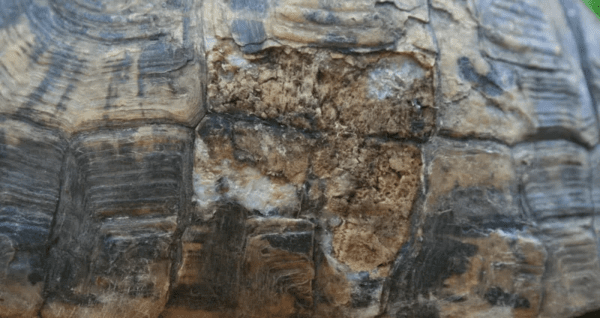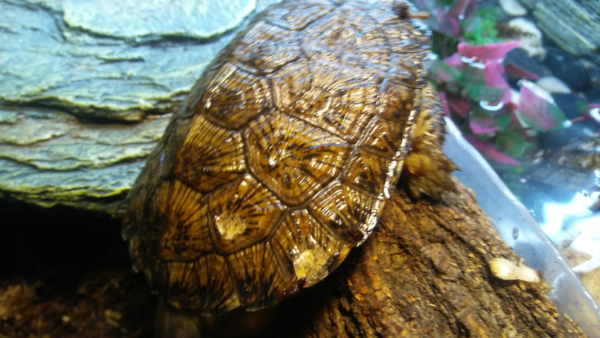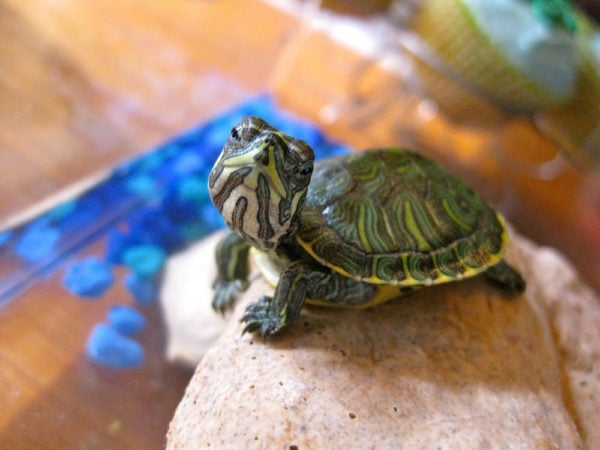A turtle should have a healthy shell. An unhealthy turtle shell means your red eared slider or other species of turtle is doing poorly. Turtles have specific requirements when it comes to staying healthy. And since you have adopted a pet, you should care for its health.
A rotting turtle’s shell is a clear sign that your turtle needs some attention. Turtle owners and reptile owners should learn how to detect whether their turtle’s shell is healthy or not. If you fail to do so and fail to provide the turtle with the right medical help, they will fall sicklier and may even die.
Simply put, a turtle’s shell rot means that the shell is infected, and a rotting shell can be extremely painful for the turtle. When turtles grow, they can show signs of rotting shells. In this post, we will help you learn how to keep aquatic turtles healthy.
Table of Contents
How Do You Know if a Turtle’s Shell Is Unhealthy?

There can be many symptoms that will tell you about the health condition of your turtle’s shell. A healthy turtle will have no problem with its shell. But when a healthy turtle becomes unhealthy, their shell starts having small pits, unhealthy peeling, turtle’s shell turning white, a layer of slimy coating, reddish fluid may start coming out of the inner or outer skin.
Sometimes, you may even see the shell flaking, lifting, and softening. In addition, the shell may start smelling, shedding scutes, which will eventually expose the nerves and bones underneath. A turtle’s scutes are made of keratin, the same substance that your fingernails are made of. Apart from that, there can be more evident signs of your turtle becoming weak. Here are a few reasons:
Lack of Appetite
Your red eared sliders no longer feel like eating. It is losing weight and refuses to eat. When you can see your turtle not eating correctly, you should worry about it right away. For most turtles and most species, this is a clear indication that something is wrong.
Feeling Lethargic
A healthy turtle will roam around freely, but when it becomes sickly, it will not want to move or interact with you and other turtle species in the same tank. You will see them having trouble swimming as well.
The Carapace Plates May Come Out
Sometimes, a few carapace plates may start coming out of the edges when they have a shell problem. This will give a mazy look to the aquatic turtles. If the outer scutes have bigger scutes, the turtles will need adequate care.
Discharge and Change of Color
An unhealthy shell can show signs of runny discharge and fluid. Along with discharge, you may see a few colors on the shell, such as yellowish, green, and white. Take the turtle to a veterinarian immediately.
What Is Unhealthy Shell Discoloration?

Turtle shell discoloration can signify Septicemic Cutaneous Ulcerative Disease, meaning shell rot or metabolic bone disease. A rotting shell often causes the shell to discolor, and one of the common causes of shell rot is fungal infections. Therefore, unhealthy shell discoloration correlates with rotting shells, which is why you should take this problem seriously and get the turtle checked once.
Turtle shell problems can be soft spots, divots, and pits on the shell. You can see flaking off the scrutes, red or white color; the unhealthy shell can start smelling, there can be discharge coming out of the shell, easily breakable, and more. These are all signs of unhealthy shell discoloration.
It is perfectly normal for a healthy turtle to start discoloration as a turtle grows, but if the discoloration is accompanied by other things, such as lethargy, lack of appetite, discharge from the shell, and more, then yes, it could be an underlying turtle’s health issue. So, rather than worrying about a turtle’s shell turning white, get the turtle checked with a vet and find out the possible reasons.
Possible Reasons for Shell Rot in Turtles?
Turtle shell problems can arise in a healthy turtle because of multiple reasons. In some cases, the whole shell can get affected or some parts of it. If you have a red eared, the following are some reasons your turtles have an unhealthy shell.
There is a Shell Damage
The main reason why the turtle’s shell is becoming unhealthy for a healthy turtle is that the shell is damaged. When it is damaged, it eventually attracts bacteria and germs to start breeding in the exposed blood vessels of the shell easily. This can cause infection.
Like wild turtles, pet turtles can fight with other animals, such as other turtles. However, the turtles might have hurt it because of poor husbandry. In addition, the shells may become sensitive because of frequent temperature changes and humidity.
The Habitat is Inappropriate
Your turtles need proper habitat to stay healthy. Poor diet, dirty water, lack of adequate water filtration, etc., can cause the shell to become weak. In addition, contaminated water can produce mold, and if it is damaged, it can get inside the shell and infect the turtle.
Turtles are messy; therefore, you need to take care of the tank yourself and ensure a safe and healthy environment. Also, ensure you provide the turtles with a proper diet. A good diet will help them to recover fast. Also, invest in good water conditioners to allow the water to stay clean.
Lack of Dry Place

When it comes to providing proper care to your pet turtle, you will have to ensure that they have a dry place where they can come and dry their shells. Even though they spend most of their time underwater, they will still look for places to fry them off. When a turtle grows, it will look for dry space more often.
If the shell stays wet for a long time, it will become unhealthy and weak. Moreover, the longer the turtle stays under the water, the more it will encourage bacterial or fungal infection and growth.
How to Keep Turtle Shells Healthy?
If you want to keep your turtle’s shell healthy, you can do that by following the few tips that we have mentioned below. Your reptile friend needs to stay healthy to live longer.
Offer Them a Good Habitat
Your turtle will need a clean water tank and enough space to roam around freely. Therefore, buy a large tank for it. If you have multiple turtles, ensure to buy a large tank that will let your reptile friends feel free.
Keep the Space Clean
Check if the tank has rotten food and unclean water. These things can easily infect the shells. Make it a habit to clean the tank regularly. If there is uneaten food left, clean them. Things like this damage it. There is only a thin layer that builds the outer shell. This shouldn’t get damaged. If you see early stages of shell rots, get the turtle checked.
Keep the Turtle Clean
Just like you keep the turtle’s tank clean, you should keep the turtle clean as well. Take the turtle out, take an extra soft toothbrush and mild soap and start scrubbing the shell. Once done, dry dock the turtle for at least 30 minutes and keep them away from water. If you see a damaged shell, use silver sulfadiazine cream. Also, they carry salmonella; hence wash your hands.
Provide a Healthy Diet
Provide good food to your turtles. The diet should include calcium, minerals, and vitamins. Ensure that the food your turtle is eating has all these ingredients. You can speak to your vet to learn more about a turtle’s diet. When the turtles grow, they will need more good food.
Provide UV Light
Invest in a good UV bulb that will emit UV-B light. Your turtle will need eight to 12 hours of light every day. Therefore, get it. Keep the humidity level and temperature right. Turtles that are deprived of UV lights fall sick.
Regular Checkup of a Healthy Turtle
Even if the turtle is normal, or you see no issues, never make the mistake of not taking them to a vet. There could be underlying issues with the shell or the whole turtle itself that you aren’t aware of.
Summary
A damaged shell can lead to multiple shell problems. A tortoise’s shell is susceptible to damage and prone to infection. Therefore, as a turtle owner, you should ensure that you provide them with suitable habitat, let them sit under UV light, eat well, and offer them a space to dry. Scute shedding and other shell problems can weaken your turtle. Whether you have young or adult turtles immediately , take them to a veterinarian if you see some issues.
No related posts.
